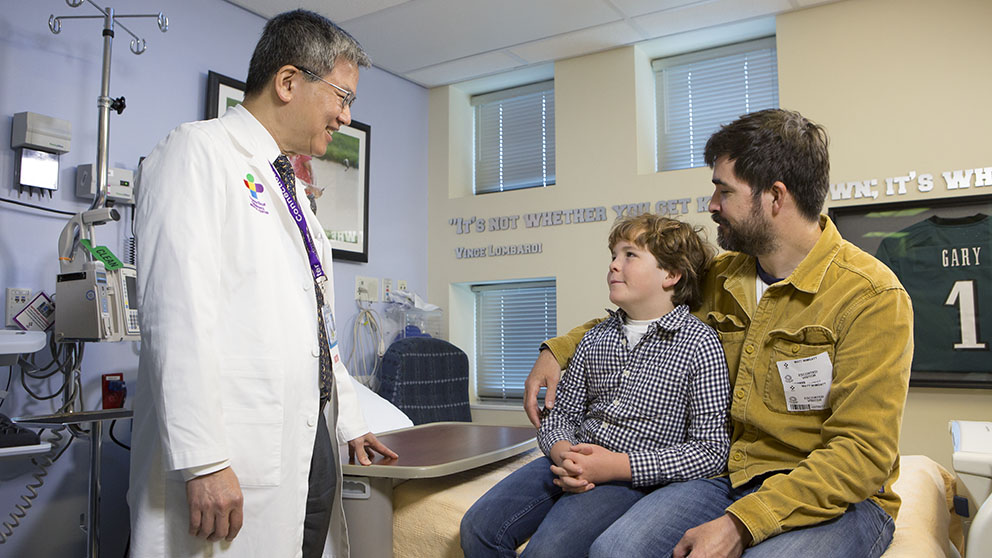
Using computer models, researchers have identified a potential new therapy that would reduce the long-term side effects of radiation therapy in pediatric brain cancer patients.
Medulloblastoma (MB) is the most common malignant brain tumor in children, accounting for 20 to 25 percent of pediatric brain tumors. Current treatments have significantly increased the survival rate, although many survivors face difficult long-term treatment-related side effects. There are also a handful of patients who don’t respond to available treatment options or will suffer MB relapse, for which there is currently no cure.
To continue improving survival rates and reduce treatment-related complications, scientists must find new therapeutic options, particularly for the more resistant group 3 and group 4 MB tumors. However, developing new cancer therapeutics is a time-consuming process, relying on multiple years of clinical research followed by a minimum 10-month Federal Drug Administration (FDA) approval process.
Thanks to a new computational approach, scientists have found a way to utilize this extensive approval process to their benefit: The answer is in the data.
Ching Lau, M.D., Ph.D.Dr. Lau specializes in pediatric brain and bone tumor research. His clinical interests include neuro-oncology, solid tumors, and osteosarcoma.Jackson Laboratory Professor Ching Lau, M.D., Ph.D is leading this exciting multi-institutional research team, and also serves as the Medical Director of Hematology-Oncology at Connecticut Children’s Medical Center and is head of the Division of Pediatric Hematology-Oncology in the Department of Pediatrics at the UConn School of Medicine.
The research team has discovered that pre-approved drug data may be re-analyzed and utilized by researchers to find crossover between the diseases that a drug is likely to treat. This process, called systematic drug repositioning, utilizes computational modeling methods to compare approved drugs’ gene expression profiles against the genomic profiles of patients.
While successful systematic drug repositioning methods already exist, a more advanced method is required to understand the complex, highly heterogeneous, ‘multifactorial’ mechanisms present in MB tumors. In a paper published in Science Translational Medicine, Lau and team proposed a new systematic drug repositioning method to address these needs. The group utilized driver signaling network identification (DSNI) and drug functional network (DFN) based methods, with a nonparametric, bootstrapping-based simulated annealing algorithm.
In the paper, researchers identified eight drugs, including three chemotherapeutic agents and five cardiac glycoside agents, previously approved for the treatment of heart failure, as possible MB-fighting agents.
Collaborator Stephen Wong of the Houston Methodist Research Institute and Cancer Center says that the therapeutic effects of cardiac glycosides against medulloblastomas were verified in in vitro systems. One drug, digoxin, was then verified with an increase of survival in an orthotopic patient-derived xenograft (PDX) mouse model system. Survival was even further extended when digoxin was used in conjunction with radiation.
“The results are promising, at concentrations that would be well-tolerated by humans based on previous data from many years of clinical use,” Wong says. “This study also shows the promise of new approaches of systems biology in drug repositioning to improve outcome for patients with these hard-to-treat cancers.”
Overall, this study demonstrated the power of the DSNI-DFN drug repositioning method and identified a potential new medulloblastoma therapy. Digoxin, a heart-failure drug, was shown to have anti-tumor properties in MB mouse models, and the DSNI-DFN method will hopefully have continued success in identifying possible treatment options for other cancers as well.
“The findings in this paper are highly significant because currently, unlike the other two subtypes of medulloblastoma, there is no targeted therapy identified for groups 3 and 4 MB,” said Lau. “This is exciting because, not only can we potentially improve overall survival of MB patients with digoxin, but the results also suggest that we could potentially reduce the dose of radiation necessary when combined with digoxin and thereby minimize long-term side effects of radiation among the survivors. Because digoxin has been used for so many years to treat heart failure, its potential side effects are well-known. This translates to shortening the process of conducting clinical trials in children with this drug.”
In other words, the potential of digoxin as an MB therapeutic looks very hopeful for pediatric cancer patients.